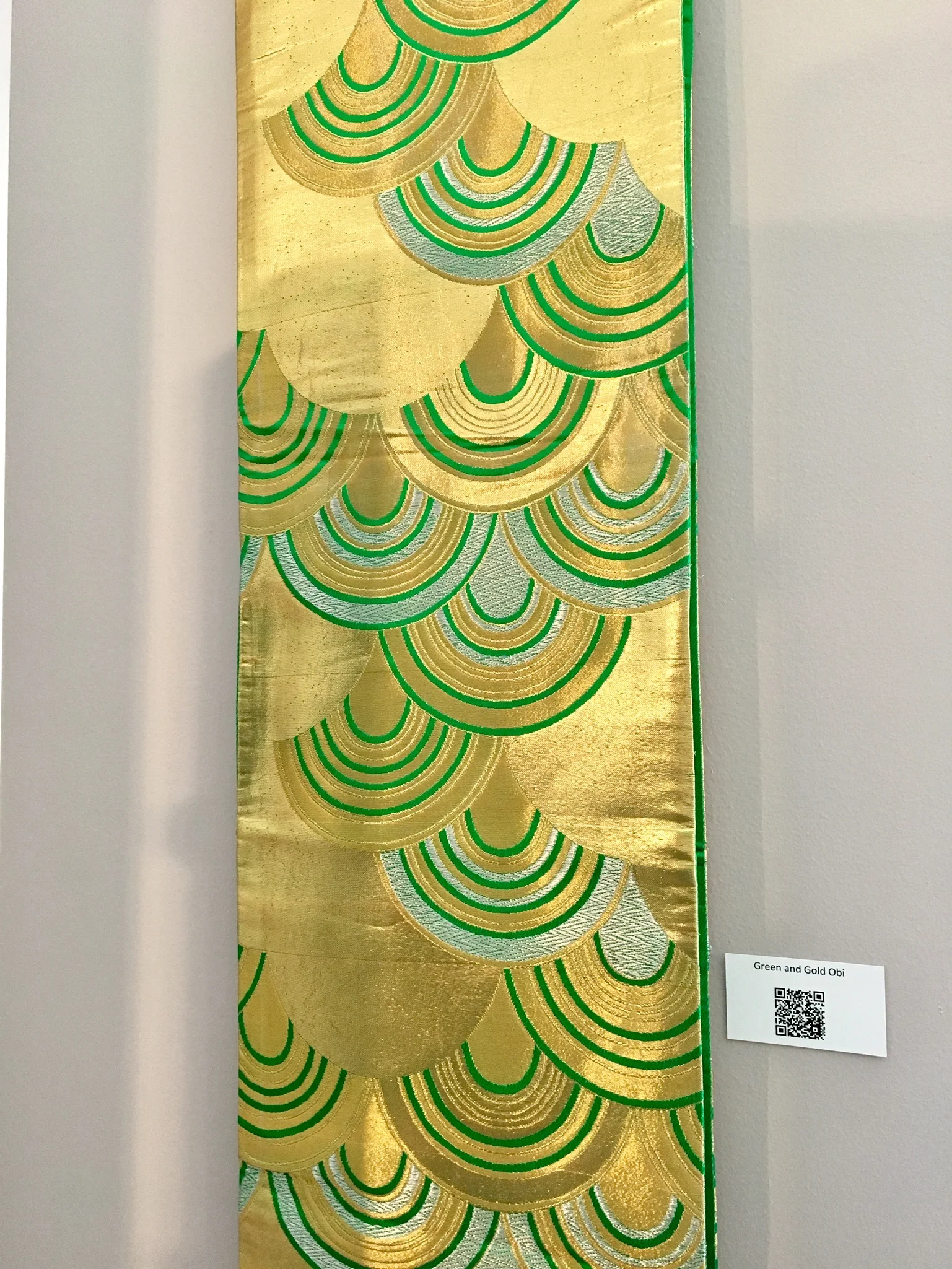Green and Gold Waves Obi
Green and Gold Waves Obi
Green and Gold Waves Obi
This Maru Obi is patterned on both sides with stylized waves of gold thread, gold foil, and silver thread embroidery. The silver and gold embroidery is alternated with different patterns to make it stand out from the gold foil waves. The waves run horizontally across the Obi and vary in size. This Obi is in excellent condition with no stains or loose threads. The silk is slightly stiff, and the Obi is easy to work with because it holds its shape well.
Seigaiha-mon (Wave pattern)
Seigaiha-mon, or wave patterns, can also be seen outside Japan, in various places across the world including Egypt and Persia. Concentric circles are layered to create this fan-shaped geometric pattern
This ancestral pattern is very common on Japanese fabrics and is composed of overlapping concentric circles. Its name signifies "waves of the blue sea". Formerly, this Japanese pattern was used to represent oceans and seas on vintage maps. The seigaiha pattern symbolizes a peaceful sea, quiet strength and good fortune. From ancient times, the pattern has been used for garments illustrated on clay figurines, pottery, lacquerwork and costumes for bugaku (Japanese court dance and music) and Noh, as well as kosode (type of narrow-sleeved kimono worn typically until the Edo period). In addition to the basic seigaiha pattern, there are many variations including one which depicts shochikubai (combination of pine, bamboo and plum) instead of circles.
Japanese patterns come in many forms and all have a hidden meaning. Very much found on the kimono and other Japanese clothing, they are called wagara. Most of the traditional Japanese patterns dates back to the 8th century and are inspired by nature, of which the symbolism is very strong in Japanese culture. This ancestral pattern is very common on Japanese fabrics and is composed of overlapping concentric circles. Its name signifies "waves of the blue sea". Formerly, this Japanese pattern was used to represent oceans and seas on vintage maps. The seigaiha pattern symbolizes a peaceful sea, quiet strength and good fortune.







